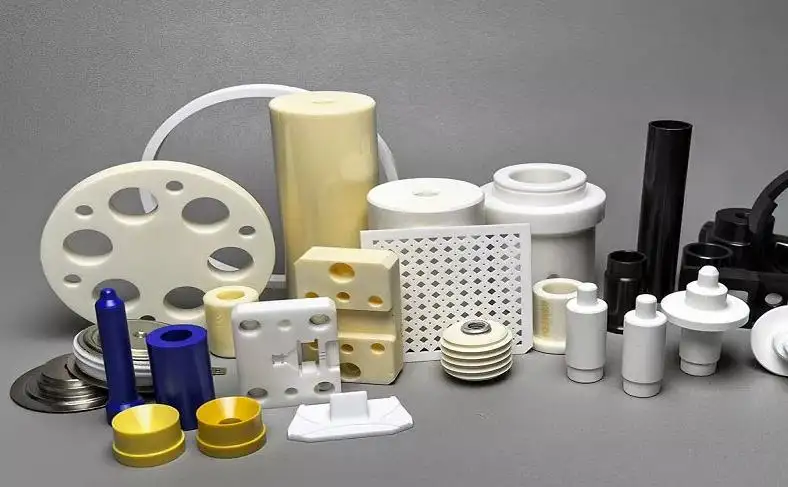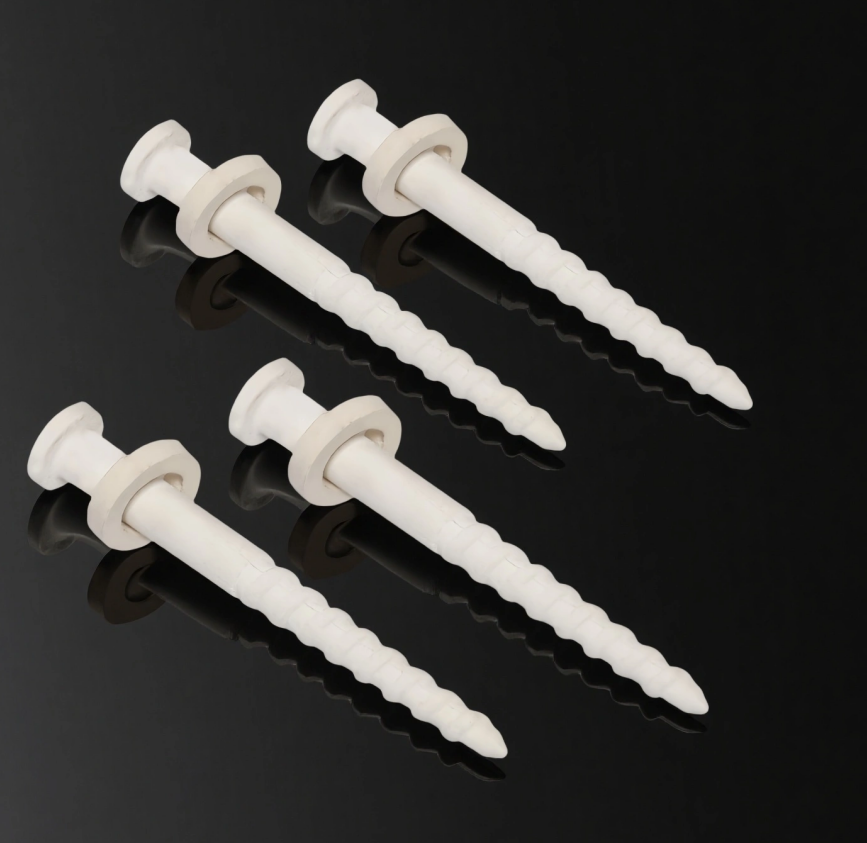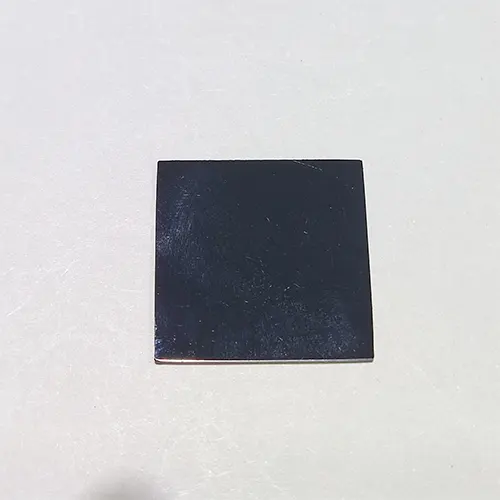Custom Technical Ceramics for Precision Parts That Metals Can't Handle
Custom Technical Ceramics turn fragile-looking materials into tough, precise parts. They are engineered ceramics with controlled microstructures. They keep size and shape under heat, chemicals, and wear. They insulate electricity without extra coatings. Typical uses span semiconductor tools, aerospace fixtures, medical devices, precision pumps, and electronics insulation. Think bushings, nozzles, guides, spacers, and complex inserts that must not drift. When metals creep or corrode, these parts keep working. They help stabilize yield and reduce downtime. But why do they last so long? And how tight can tolerances go in real production? Keep reading - we'll show the answers with practical examples.

Why Metals Hit Limits - And Ceramics Keep Working
Every plant manager knows the story: a line runs hot, exposure climbs, and metal parts begin to creep, pit, or arc. Tolerances loosen. Leakage starts. The yield curve tilts the wrong way. That pain shows up first in aerospace fixtures, semiconductor tools, medical devices, and precision machinery - exactly where failure is most expensive.
Custom Technical Ceramics approach the same jobs differently. The microstructure stays stable under heat. The surface resists slurry and corrosive media. Electrical insulation is built in, so parts don't need extra layers or coatings that can peel. For operators, the outcome is simple: fewer changeovers, more predictable runs, and cleaner data on capability indices.
✅ Where Metals Struggle In Real Use
• Thermal drift: metals soften under repeated heat cycles; Custom Technical Ceramics maintain shape and finish.
• Chemical attack: acids, alkalis, and abrasive slurries eat metal nozzles and bushings; engineered ceramics resist wear and corrosion.
• Electrical leakage: conductive housings create noise and risk; ceramics provide robust insulation in high-voltage and RF systems.
• Micro-motion wear: sliding interfaces grind away metal features; ceramic hardness slows wear and preserves accuracy.
Ceramics are not "nice to have” upgrades. They're a direct response to downtime, scrap, and safety risks that hit the P&L.
What UPCERA Delivers In Custom Technical Ceramics
UPCERA combines materials know-how with agile custom processing to turn difficult drawings into stable, repeatable parts. You bring the operating window and the failure modes; we match a ceramic system and a machining route to hit the spec without over-engineering the cost.
We customize ceramic structural components for complex geometries, extreme tolerance control, and special material combinations. Applications range from precision fluid control to insulating hardware for electronics, from semiconductor consumables to medical and chemical equipment. Our R&D roots trace to Tsinghua University's ceramics expertise, and our collaboration with Sinocera strengthens source development and lot-to-lot quality - key for regulated and high-mix production.
✅ Representative Parts We Ship
• Bushings and nozzles - wear- and corrosion-resistant for accurate, repeatable flow control.
• Metallized components with square punched holes - stable insulation and reliable bonding for electronic assemblies.
• Engraved, printed, and metal-bonded parts - robust ceramic-to-metal joints for structural strength and hermeticity.
• Special-shaped components - non-standard structures machined to customer drawings for unique assemblies.
These Custom Technical Ceramics can be supplied as tubes, rods, plates, or intricate free-form shapes. We support pilot runs and scale to mass production with traceable metrology at each step.
✅ Size & Tolerance Highlights Engineers Care About
Not every project needs a full data sheet. Here are the numbers teams most often ask for when qualifying a ceramic design:
- Size envelope: tubes/rods up to ≤1000 mm length; plates up to ≤400 × 400 mm; custom shapes ≤300 mm.
- Thin features: minimum wall thickness 0.1–0.2 mm for lightweight, high-precision designs.
- Fine features: drilled holes ≥ φ0.4 mm and thread diameters ≥ M2; internal corners down to R0.1 mm.
- Outer-diameter accuracy: as tight as ±0.002 mm (1–25 mm OD); ±0.003 mm (20–50 mm).
- Inner-diameter accuracy: down to ±0.001 mm (0.5–3 mm ID) and ±0.003 mm (3–10 mm ID).
- Length/thickness precision: ±0.005 mm to control stack-ups in assemblies.
- Surface roughness: Ra 0.02–0.2, supporting low friction, better seals, and clean fluid behavior.
- Geometric control: roundness and concentricity to 0.002 mm; flatness to 0.003 mm for aligned builds.
Those capabilities translate directly into easier fitting, faster alignment, and fewer rework loops on the floor.
✅ Materials And R&D You Can Build On
Our team continues to advance advanced ceramics - including zirconia systems - so customers can raise performance without redesigning entire platforms. We've developed more than ten material families covering hundreds of types and tens of thousands of products, backed by a strong IP framework. That depth lets us tune properties such as fracture toughness, thermal shock resistance, and dielectric strength for the exact stress profile of your part.
Semiconductor teams rely on stable nozzles, bushings, and fixtures that keep micron-level alignment after long heat and chemical cycles. Aerospace programs need creepage-free, vibration-tolerant hardware that won't corrode in mixed environments. Medical equipment benefits from clean surfaces, repeatable tolerances, and assured electrical isolation. In each case, Custom Technical Ceramics from UPCERA protect yield and shorten maintenance windows.

From First Drawing To Reliable Supply
Switching from metal to ceramic should not feel risky. Our process is set up to de-risk every step, from the first drawing to the nth repeat order.
How We Work - Simple, Fast, Traceable
- Define the problem. Share drawings, critical features, and the environment. Tell us where metals fail - heat, wear, chemistry, leakage, or insulation.
- Material & process pairing. We propose the best ceramic composition and machining approach for your priorities - lifespan, friction, or tightest tolerance.
- Prototype quickly. Samples validate fit, finish, and function in the real tool or assembly, not just on paper.
- Scale with confidence. Stable processes and metrology lock in repeatability for volume supply, with incoming-inspection data that makes approvals easier.
Not every feature needs the toughest material. We help you aim the spend at the real bottlenecks. Many customers start with the highest-wear metal part, prove the ROI, and then extend ceramics to adjacent components.
✅ Practical Tips For A Smooth Transition
- Start with the failure mode. Target the part causing most downtime or drift.
- Lock critical dimensions early. Agree on datums, inspection points, and geometric tolerances.
- Think assembly. Use surface finish and concentricity to reduce shimming and alignment time.
- Plan spares strategically. Ceramics last longer; a leaner spare kit often frees working capital.
Talk To UPCERA (CTA)
If your precision parts drift, arc, corrode, or simply wear out too fast, it's time to evaluate Custom Technical Ceramics. Contact UPCERA for a fast feasibility review and a focused quotation. Send your drawings, the operating window, and the pain points. We'll return an engineering proposal with achievable tolerances, material guidance, and a sampling plan that keeps your project moving.
-
With advanced materials, disciplined machining, and responsive engineering, UPCERA helps you build precise, reliable components that metals can't handle - and run your production with fewer surprises and better margins.
 English
English 中文
中文





